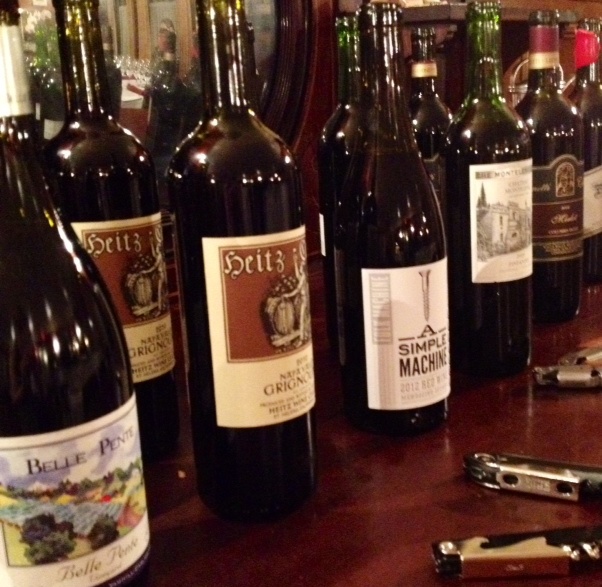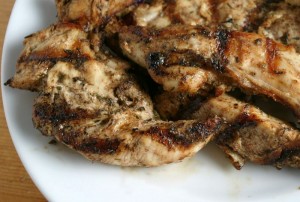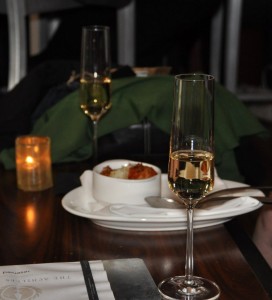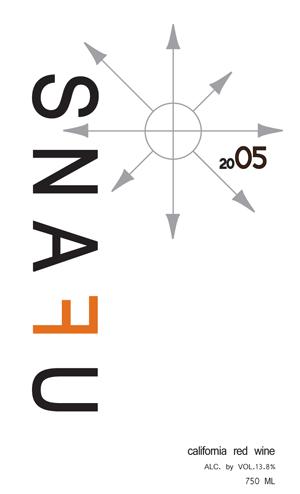We recently taught a wine seminar at Harvard University celebrating the Art of Food/Wine Pairings. Our muse? West Coast Wines! California, Washington and Oregon were all gainfully represented.
It was not lost on us that the underlying vinous theme focused on wines from a part of the world that is quite large and quite diverse; it's a culinary Choose Your Own Adventure. And so the food pairing principle "if it grows together it goes together" is, quite simply, harder to exemplify. Not to worry!
If you cannot at least start out PAIRING BY PLACE and, therefore, tapping into the local cuisine which blossoms naturally with wines grown in a particular region, then you must make a go of it by applying one of these principles to achieve a balanced, complementary, aw-eliciting experience:
PAIR TO COMPARE.
Consider the Weight of the dish* (usually taking into consideration how it is prepared (e.g. steamed vs. grilled vs. roasted) and if it is dressed in a rich sauce or just a squeeze of lemon). You'll want the weight of the wine to match the weight of the dish.
Consider also the Acidity in the dish. Is the dish bright? Does your mouth water at the thought of it (like the thought of grapefruit, tomato sauce or dill pickles)? If it is a high acid dish, you'll want a high acid wine.
Next, consider the 'Meatiness' of it. Is the bold factor dialed all the way up? Whether it is a hearty vegetarian dish like sauteed portabellas and eggplant, or roast lamb and potatoes, the more savory the dish the more tannin-loving (aka how dry your tongue feels after you swallow) it will be. High tannin/very dry wines marry perfectly with hearty, "meaty" fare.
Last, what about Sweetness? BBQ sauce is Zinfandel-loving because Zin tends to be bold, bursting with ripe and/or dried fruits. While the wine may be vinified dry, the flavor experience from all that fruit complements the sweetness of the BBQ sauce.
PAIR TO CONTRAST.
Alternatively you'll want to create balance by contrasting what's on your plate - and nothing is truer than when you are faced with a particularly Salty dish! Fried foods, often Chinese fare and meats like Ham or charcuterie tend to be saltier and require a wine with a sweeter or more fruit-forward composition to create a harmonious palate experience.
While these principles are sure to get you started, there's something awesome to be said for the exploration itself, for figuring out how flavors jive - for finding out the hard way, and if you're lucky, for finding out the optimal way. Each revelation is a win in itself - inspiration promotes celebration (and keeping at it)! So most important, HAVE FUN on the journey.
* By "dish" we don't just mean the protein on the plate! Consider the sides as well (sometimes they are more interesting and fun to pair off of), or what components you want on your fork - the 'bite' in its entirety.




 Happy 4th of July! Ok... so we still have a few days of anticipation left this week - or a few more days to get our marinades going and our wine shopping underway. This week we resume our food/wine pairing conversation with episode # 3 in our Supper Swap Series: gett'n giggy (jerky?) with chicken and Zinfandel!
It doesn't get more American than
Happy 4th of July! Ok... so we still have a few days of anticipation left this week - or a few more days to get our marinades going and our wine shopping underway. This week we resume our food/wine pairing conversation with episode # 3 in our Supper Swap Series: gett'n giggy (jerky?) with chicken and Zinfandel!
It doesn't get more American than  Folks have been coming by the shop with great gusto for warmer temps; and they have been seeking out red wines for the occasion! No, we're not just talking about "BBQ wines". We're talking about wines to sip and enjoy with or without a meal while you sit on your porch watching the sun go down.
Today I'm going to share some lesser known varietals or unique regional offerings (hybrids or blends) perfect for just such an occasion. Your mission, should you choose to accept it, is taking this list (or a modified version, as you see fit) to your local shop to see which offerings they have on offer. These are some cool wines to keep your summer fresh - but they aren't necessarily available at every shop. They are, no less, worth seeking out.
Folks have been coming by the shop with great gusto for warmer temps; and they have been seeking out red wines for the occasion! No, we're not just talking about "BBQ wines". We're talking about wines to sip and enjoy with or without a meal while you sit on your porch watching the sun go down.
Today I'm going to share some lesser known varietals or unique regional offerings (hybrids or blends) perfect for just such an occasion. Your mission, should you choose to accept it, is taking this list (or a modified version, as you see fit) to your local shop to see which offerings they have on offer. These are some cool wines to keep your summer fresh - but they aren't necessarily available at every shop. They are, no less, worth seeking out. Ok. Bad joke. (I can't take full credit as one of my best friends, fellow foodie and wine lover actually fed it to me.) What can I say? Sometimes a little levity is needed!And it was Cinco de Mayo yesterday....
Ok. Bad joke. (I can't take full credit as one of my best friends, fellow foodie and wine lover actually fed it to me.) What can I say? Sometimes a little levity is needed!And it was Cinco de Mayo yesterday....
 Today the rain and leaves are swirling and the sun isn't due to show itself. On burly fall days like these, there's nothing better than an awesome bottle of wine to hunker down with and lift your spirits!
The last few weeks I've broken down the nerdier nuances of cool red varietals perfect for fall. While fabulous on their own, sometimes the best of the best are actually blends of a few - or several - different grapes. Given the circumstances outside my office window, it's only appropriate that we start exploring these finds with the 2005 SNAFU red blend.
Today the rain and leaves are swirling and the sun isn't due to show itself. On burly fall days like these, there's nothing better than an awesome bottle of wine to hunker down with and lift your spirits!
The last few weeks I've broken down the nerdier nuances of cool red varietals perfect for fall. While fabulous on their own, sometimes the best of the best are actually blends of a few - or several - different grapes. Given the circumstances outside my office window, it's only appropriate that we start exploring these finds with the 2005 SNAFU red blend. Big, red, New World wines (California and Australia) were my first real introduction to the wine world. My Phoenix upbringing/roots made those wines easily accessible in the local market; meanwhile, my older brother and sister-in-law had gotten a jump start on traveling to the CA wine country in search of the best wines on offer. I can't remember exactly which year it was they came across
Big, red, New World wines (California and Australia) were my first real introduction to the wine world. My Phoenix upbringing/roots made those wines easily accessible in the local market; meanwhile, my older brother and sister-in-law had gotten a jump start on traveling to the CA wine country in search of the best wines on offer. I can't remember exactly which year it was they came across